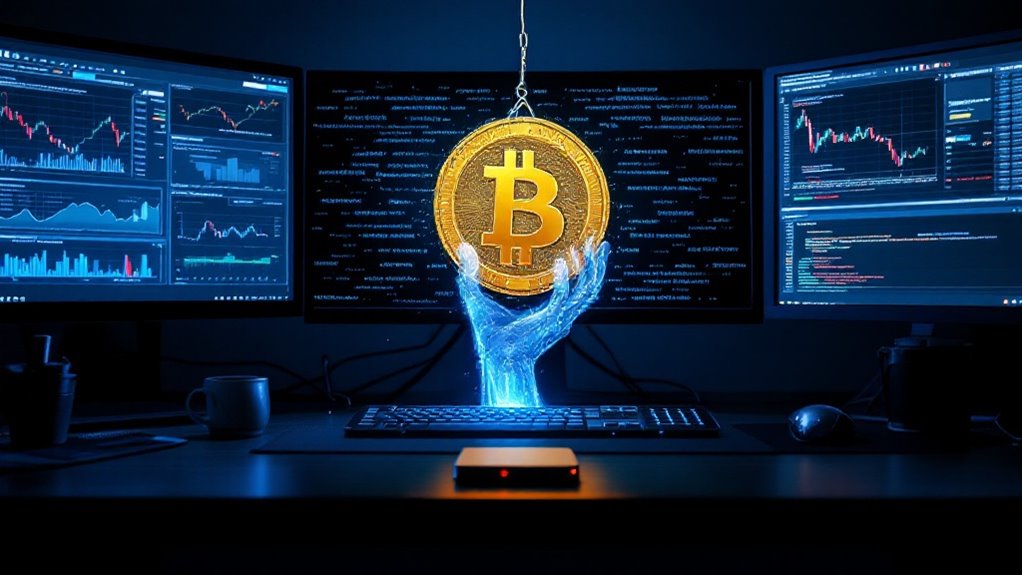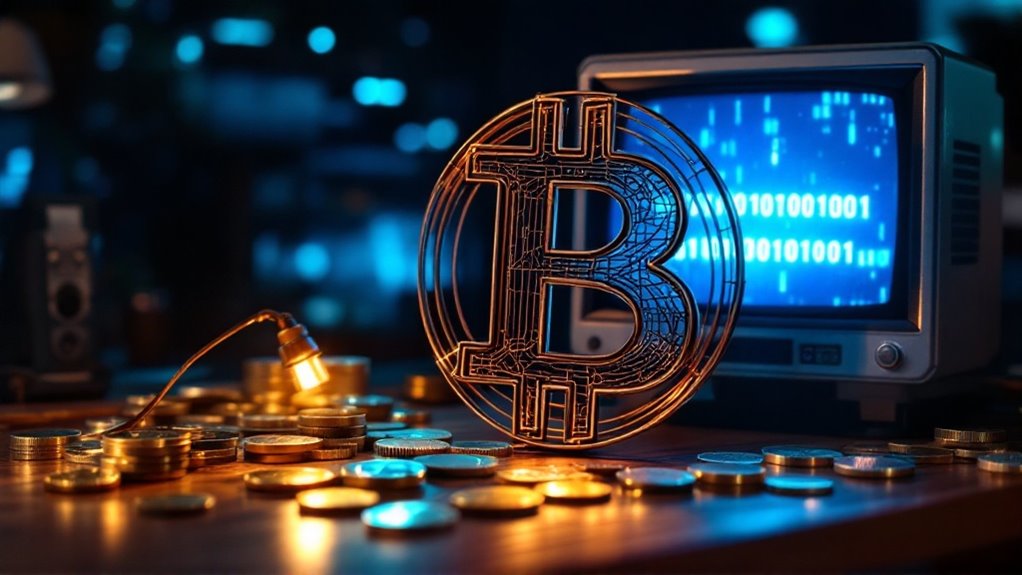Fractionalized NFTs transform expensive digital assets into bite-sized, tradeable shares through smart contracts, much like slicing a digital pie. These blockchain-powered fragments allow multiple investors to own pieces of valuable NFTs, from virtual real estate to rare digital art, without breaking the bank. The technology locks original NFTs in secure vaults while minting tradeable tokens that represent partial ownership. As the NFT market expands toward $388.89 billion by 2032, fractional ownership opens doors to previously inaccessible digital treasures.

As the digital art world continues to evolve at breakneck speed, fractionalized NFTs have emerged as a groundbreaking solution to one of the market's most pressing challenges: accessibility. Like slicing a digital pie into perfectly equal portions, these innovative instruments allow multiple investors to own shares of a single, often expensive, NFT through a process that transforms the indivisible into the divisible.
The mechanics behind fractionalization are elegantly simple yet technologically sophisticated. When an NFT enters this process, it's locked away in a smart contract like a precious gem in a high-tech vault. The contract then mints a predetermined number of fungible tokens, each representing a slice of ownership in the original piece. These tokens, typically following the ERC-20 standard, can be traded as easily as sending a text message. This system enables curator fees for NFT owners who choose to fractionalize their tokens. The growing popularity of this system is evident, as the NFT market is expected to reach $388.89 billion by 2032.
Platforms like Fractional.art and NIFTEX have become bustling marketplaces where collectors gather to trade these digital fragments. Imagine a virtual auction house where instead of bidding on whole masterpieces, enthusiasts can purchase shares in blue-chip NFTs for the price of a coffee. This democratization has sent ripples through the digital art world, transforming once-exclusive collections into community-owned treasures. Similar to traditional cryptocurrencies, these platforms leverage blockchain technology to maintain transparent ownership records.
The applications stretch far beyond simple art ownership. Virtual real estate moguls are dividing digital land parcels, while gamers are sharing ownership of rare in-game items that would otherwise be out of reach. The metaverse, that shimming digital frontier, has become a playground for fractional ownership experiments.
Yet, like any pioneering technology, fractional NFTs face their share of hurdles. Regulatory questions loom like storm clouds on the horizon, particularly regarding securities classification. The challenge of managing multiple owners and reconstituting the original NFT can feel like herding digital cats.
Despite these obstacles, the future appears promising. As DeFi protocols integrate with fractional NFTs and governance mechanisms evolve, this technology continues to bridge the gap between exclusive digital assets and everyday investors, one fraction at a time.
Frequently Asked Questions
What Happens to Fractionalized NFTS if the Platform Hosting Them Shuts Down?
If a platform hosting fractionalized NFTs shuts down, ownership data remains secure on the blockchain, but trading becomes difficult. Fractions may lose value due to limited liquidity and reconstitution challenges.
Can Fractionalized NFT Shares Be Converted Back Into a Whole NFT?
Yes, fractionalized shares can be reconstituted into a whole NFT through buyout auctions. This process requires purchasing all fractional tokens, with smart contracts managing the reconstitution when all shares are acquired.
How Are Voting Rights Distributed Among Fraction Holders of an NFT?
Voting rights are distributed proportionally based on ownership percentage of fractional tokens held. Token holders can participate in decisions regarding reserve prices, sales, and asset management through smart contract-governed voting mechanisms.
Are There Minimum Investment Requirements for Buying Fractionalized NFT Shares?
Minimum investment requirements vary by platform, ranging from as low as $1 to over $1000. Some platforms like Fractional.art have no set minimum, while others like Unicly and NFTX maintain specific thresholds.
What Legal Regulations Govern the Trading of Fractionalized NFTS?
Trading of fractionalized NFTs operates in a regulatory gray area. The SEC hasn't provided clear guidelines but may classify them as securities under the Howey test, requiring compliance with federal securities laws.









